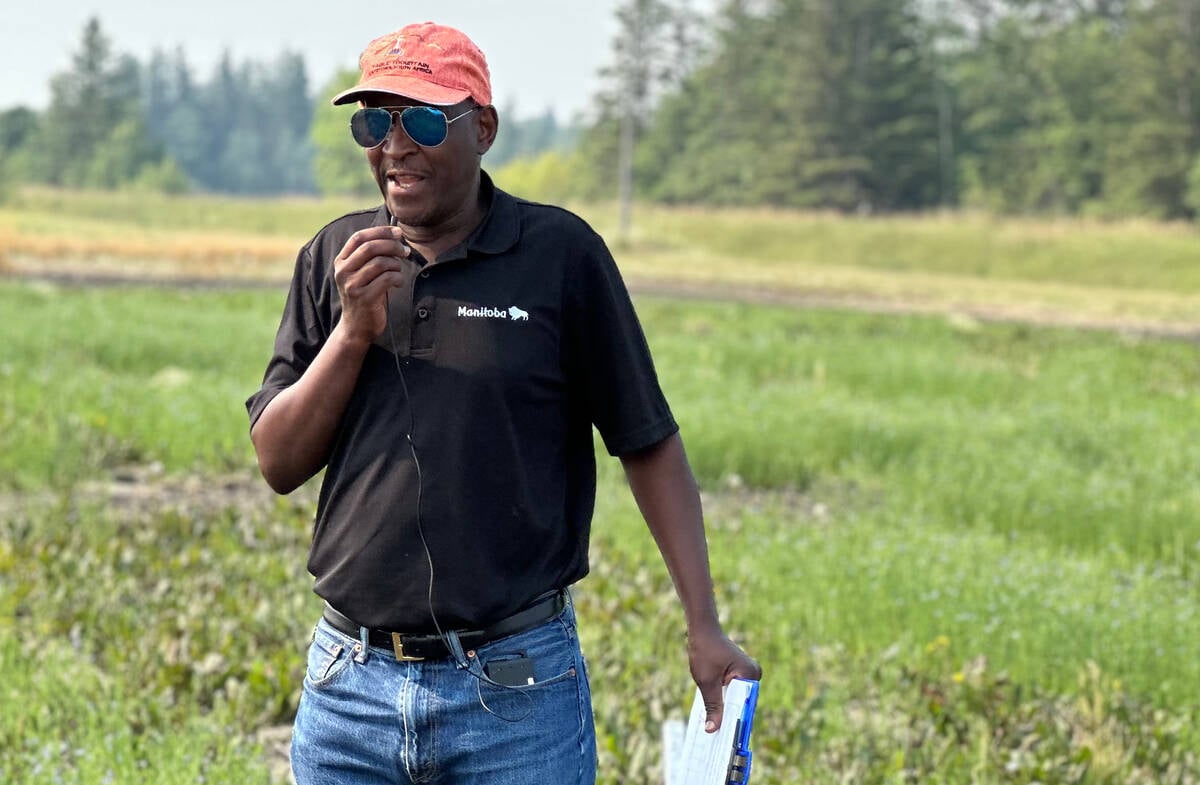Manitoba’s fusarium head blight outlook isn’t good, says Agriculture and Agri- Food Canada research scientist Jeannie Gilbert.
But forecasting how widespread FHB, a fungal disease that can produce mycotoxins and lower crop quality and yield, will be is as difficult as predicting the weather, she said during a recent Canadian Wheat Board webinar.
“If we get a couple of months without this high moisture and things dry up, we could be all right,” Gilbert said. “And if it continues with this high relative humidity we could be in for another very bad year. It’s so dependent on the weather.”
Read Also

How much nitrogen can farmers really cut?
Manitoba fertilizer trials look for nitrification inhibitor sweet spot, to lower greenhouse gas emissions and cost without hurting yield.
However, this year farmers will have another tool to help assess the FHB risk, said CWB agronomist Mike Grenier. A free risk-assessment map that takes a spring wheat variety’s susceptibility to FHB infection and relative humidity into account is available at www.weatherfarm.com, he said.
Since all winter wheats grown in Western Canada are very susceptible to FHB, the winter wheat risk map takes temperature and relative humidity into account.
“The goal of this risk forecast is to help farmers to evaluate the need for fungicides to improve the management of fusarium head blight,” Grenier said.
There are three prerequisites before the disease can infect a crop – a host crop, the presence of the pathogen, and suitable weather conditions.
Manitoba has the host – millions of acres of wheat, barley, oats and corn – and the FHB pathogen is here too, surviving on the residue to crops infected last year. That leaves the weather. If it’s warm and humid when cereal crops are flowering, the risk soars.
Rotation – not planting cereals in fields that grew cereals the previous year – and planting varieties with some resistance to FHB are the first lines of defence, said Grenier. But varieties have already been selected and planted.
That leaves fungicides. They work best in both cutting the number of fusarium damaged kernels (FDK) and levels of the mycotoxin deoxynivalenol (DON) when applied to varieties with some resistance to FHB, Grenier said. He recommends planting varieties with a minimum rating of “Intermediate” resistance to FHB, although farmers need to take other factors into account such as sawfly tolerance in areas where that insect is a threat.
The CWB’s FHB risk model was developed in the U.S. and it works well in North Dakota, southern and western Manitoba, Grenier said. The Pest Management Centre is funding a two-year study to see if the model works further west.
“The key is monitoring those (weather) conditions as the crop is coming out of the boot and through the heading period until it reaches anthesis or the flowering stage and determining… when it’s reaching this critical period if a fungicide is warranted,” Grenier said.
While the FHB map can tell farmers the potential risk from FHB infection, farmers have to assess if their crop is at the susceptible stage, which is early flowering.
“Once you see the disease in the field it’s actually too late,” Grenier said. “You have to be making that decision to be applying the fungicide when the crop is heading far in advance of when you’re going to see symptoms.
“The timing is almost more art than science because in any given field based on your main spike and your tillers you’re going to have quite a range in heading and when to make that fungicide application comes down to user experience and timing it appropriately.”
Wheat crops can move quickly from head emergence through flowering. When flowering starts, anthers emerge from the middle of the wheat head and move up and down over the next day or so. When the anthers start to dry, the optimum time for applying a fungicide has past.
WeatherFarm has information tools Crop Growth Stage and Growing Degree Days to help farmers track where their crop is at, Grenier said.
Two of Manitoba’s most popular spring wheats – Kane and Glenn – have an “iantermediate” rating for FHB.
With Glenn, FHB infections don’t appear to spread throughout the head while the plant is growing, but it can receive multiple infections in a bad year, Grenier said. He’s also seen cases in which FHB has spread after the crop has matured.
Even though FHB overwinters in cereal residue, Gilbert said studies have shown FHB infections are lower in zero-till soils than in minimum or conventionally tilled fields. The hypothesis is infections are lower because the disease is exposed to less air in zero-till fields. [email protected]
———
“Youhavetobemaking thatdecisiontobeapplying thefungicidewhenthe cropisheadingfarin advanceofwhenyou’re goingtoseesymptoms.”
– MI KE GRENIER















